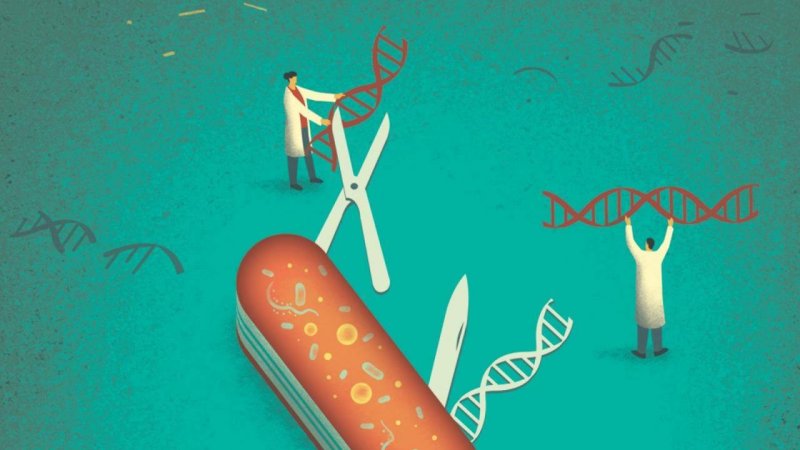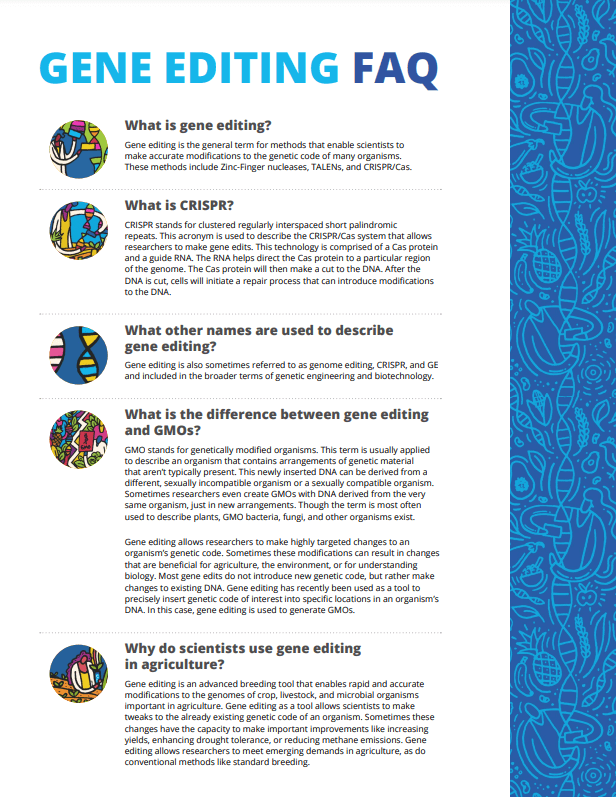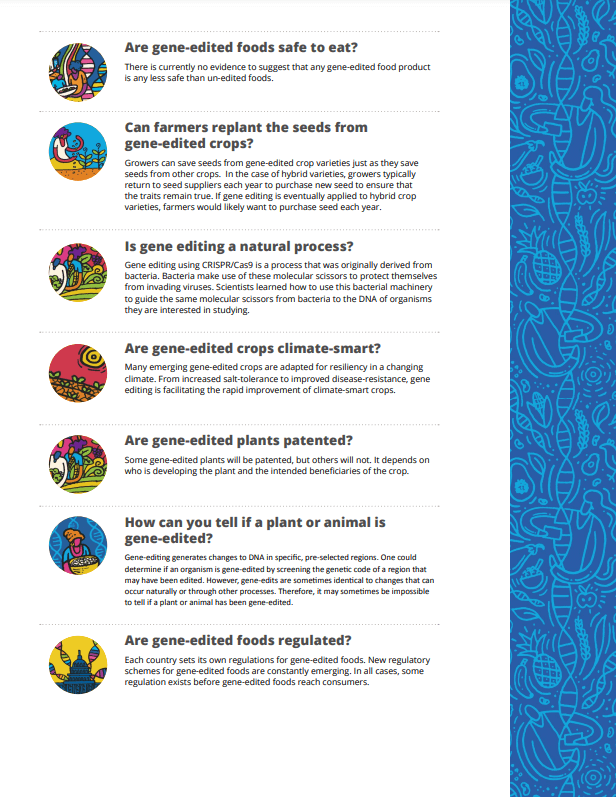Gene editing is when a scientist makes a tiny, controlled change in the DNA of a seed or animal, including humans. In agriculture, it can improve productivity, enhance nutrition or help reduce the use of inputs, from chemicals to water. In humans, it can be used to edit harmful mutations to cure diseases with genetic origins.
CRISPR is one of the most used and well known gene editing tools. The simplest way to envision this process is to imagine editing a giant manuscript. You flip through the hundreds of pages until you reach the once sentence you wish to alter, and then carefully change a single word. This creates only a tiny change in an enormously complex word document or, in this case, genome.
This infographic developed by the Cornell Alliance for Science explains gene editing in more detail:
Download the PDF here: Gene-editing-FAQ


































